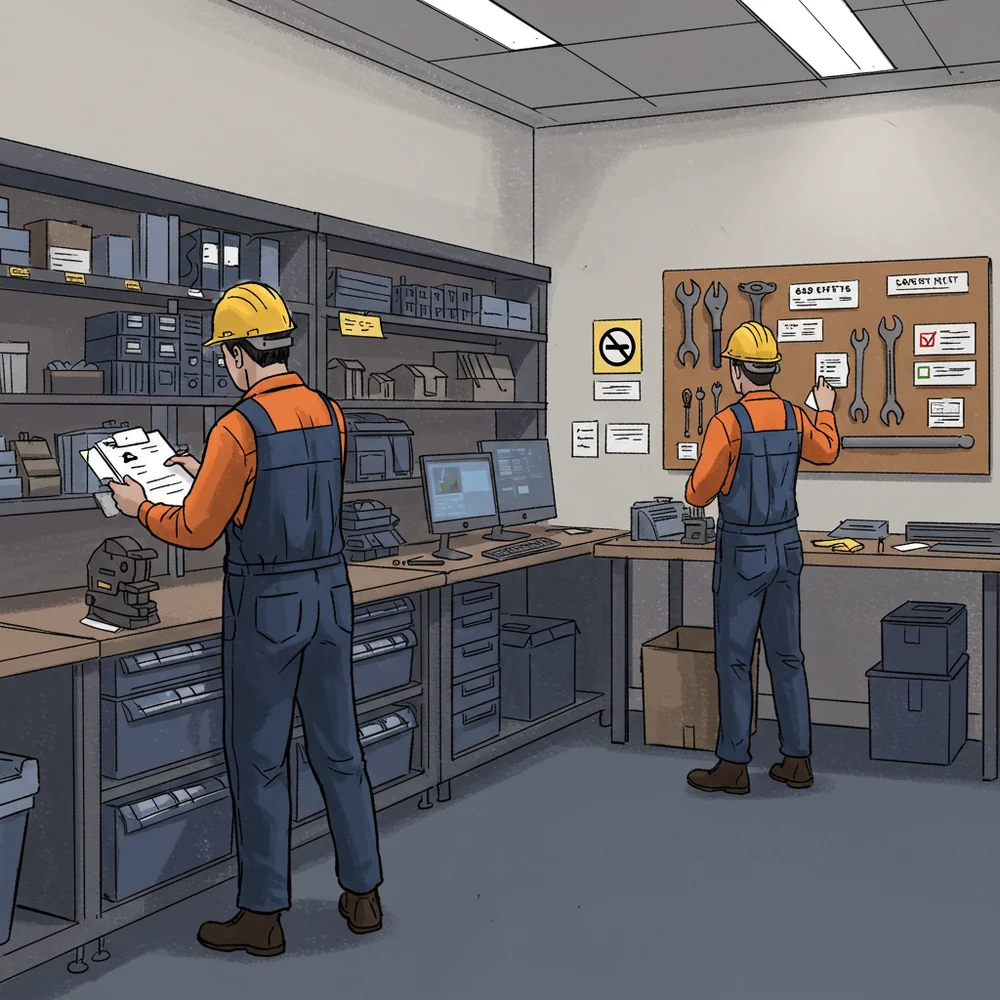
5S Audit Checklist for Workplace Safety and Quality
5S Workplace Organization Audit
Comprehensive 5S audit checklist covering Sort, Set in Order, Shine, Standardize, and Sustain principles to ensure workplace organization, cleanliness, and continuous improvement.
1. Sort / Seiri – Eliminate Unnecessary Items
2. Set in Order / Seiton – Organize & Arrange
3. Shine / Seiso – Cleanliness & Inspection
4. Standardize / Seiketsu – Consistency & Procedures
5. Sustain / Shitsuke – Discipline & Continuous Improvement
6. Safety & Ergonomics
7. Maintenance & Equipment Reliability
8. Visual Management & Communication
9. Training, Awareness & Competence
10. Audit Follow-up & Improvement Actions
Overall Progress
0% complete
Checklist Progress
0% complete - Ready to download!
Related Checklists
Explore more checklists in the Audit Checklists category
Website Audit Checklist: Technical, SEO & Content Review
Comprehensive website audit checklist covering technical infrastructure, performance, mobile usability, SEO, content quality, UX, accessibility, security, and analytics.
Ultimate Financial Audit Checklist: Save Time & Avoid Errors
Comprehensive financial audit checklist covering audit planning, internal controls, revenue, expenses, cash, inventory, fixed assets, liabilities, and financial statement presentation.
HR Audit Checklist for Compliance & Efficiency
Comprehensive HR audit checklist covering governance, policies, recruitment, performance management, and compliance.
Complete Internal Audit Process and Compliance Guide
Comprehensive internal audit checklist covering governance, financial management, operations, IT, quality, HSE, procurement, customer service, and continuous improvement.
ISO 9001:2015 Audit Checklist for QMS Compliance
Comprehensive ISO 9001:2015 audit checklist covering all QMS clauses, documentation, and processes to ensure compliance and continual improvement.
Popular Categories
Most downloaded checklist categories
Audit Checklists
Ensure accuracy and compliance with audit checklists for business, finance, and safety. Organized tools for efficient auditing.
Safety Checklists
Stay safe with checklists for workplace, home, and emergency preparedness. Reduce risks and stay ready for any situation.
Assessment Checklists
Streamline evaluations with detailed assessment checklists. Ensure accuracy, consistency, and efficiency in academic, workplace, and project reviews.
Car Checklists
Find essential car checklists for maintenance, safety, road trips, and inspections. Stay prepared and keep your vehicle in top shape.
Home Checklists
Explore home checklists for cleaning, organization, safety, and maintenance. Keep your home efficient, safe, and clutter-free.
Wedding Checklists
Plan your big day with wedding checklists covering planning, budget, guests, and timeline. Stay organized from start to finish.



